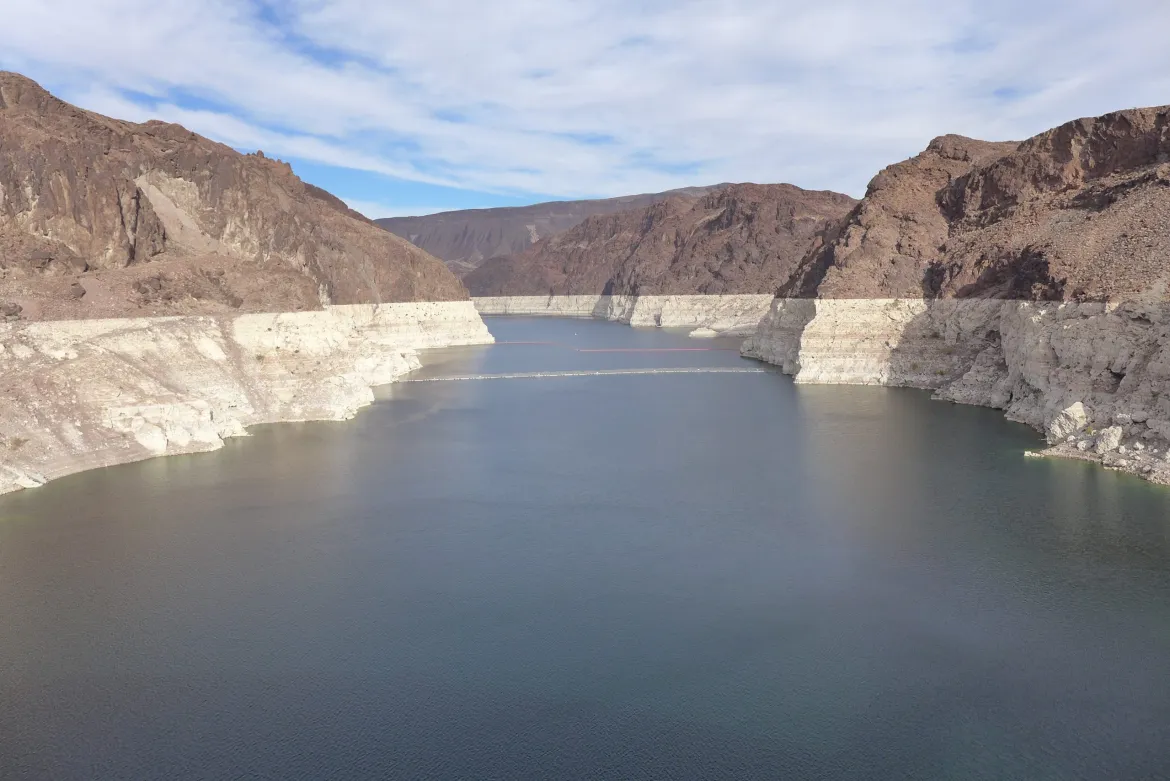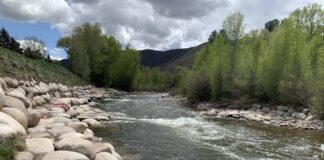
STEAMBOAT SPRINGS — Water managers in recent weeks have put forth plans for conservation aimed at addressing the water-scarcity crisis on the Colorado River. But the proposals, which are vague and voluntary and lack goals with numbers, will probably do little to get additional water into the nation’s two largest reservoirs with the urgency officials say is needed.
In June, federal officials said the seven Colorado River basin states had to conserve an additional 2 million to 4 million acre-feet and threatened to take unilateral action if the states didn’t come up with a plan within 60 days.
But the deadline came and went without a basinwide deal or drastic action by the U.S. Bureau of Reclamation, except to implement the next round of cuts already agreed to by the states in the 2019 Drought Contingency Plan. As of Friday, there was still no plan from the lower basin states — California, Nevada and Arizona — on which upper basin water managers say the bulk of the responsibility to conserve rests.

Cities say they will reduce
On Wednesday, a group of seven municipal water providers — Aurora Water, Denver Water, Pueblo Water, Southeastern Colorado Water Conservancy District, Colorado Springs Utilities, Southern Nevada Water Authority and Metropolitan Water District of Southern California — sent a letter and memorandum of understanding to the Bureau of Reclamation pledging to be part of the solution by reducing their water consumption. They committed to expand water-efficiency programs and reduce nonfunctional turf grass by 30%.
The move was praised by environmental conservation group Western Resource Advocates as a good first step.
But the MOU does not include a specific amount of water savings from the municipalities. And although some urban water providers in the basin have been using less water in recent years even as their populations grow, it’s unclear if the new commitments will result in them diverting less from the Colorado River.
“They weren’t able to put numbers, they weren’t able to put dates, we don’t know how much they can actually save, but I’m glad they are saying we want to be part of the solution,” said John Berggren, a water policy analyst with WRA.
Berggren said any success of the measures will depend on the scale.
“If all these providers really scaled up their programs … with millions of dollars and dozens of staff, in a year or two, we could see fairly decent savings,” he said.
Even if the municipalities do conserve water, the amount of water they command is relatively small. Agriculture uses about 80% of the Colorado River’s allocation; in the state of Colorado, it’s roughly 86%.

5-point Plan
James Eklund, a water attorney and former head of the Colorado Water Conservation Board, who was one of the architects of the Drought Contingency Plan, said water managers, including himself, have failed at getting more water into the system. He addressed a panel of experts at the biannual gathering of the Colorado Water Congress in Steamboat Springs on Thursday.
“If you turned off all the municipalities, you wouldn’t have the water necessary to solve this problem, so we have to deal with agriculture,” Eklund said.
Eklund also took aim at the upper basin states’ 5 Point Plan. The plan was the Upper Colorado River Commission’s response to the feds’ 2 million- to 4 million-acre-foot challenge and includes a plan to restart a program that would pay irrigators to temporarily leave more water in the river. Known as the System Conservation Pilot Program, it ran from 2014 to 2018. It’s still unclear how much funding the program would receive this time around or how soon Lake Powell could see a boost from it.
“Our 5 Point Plan doesn’t get it done in my opinion,” Eklund said.
CWCB director and panelist Becky Mitchell addressed the criticism that plans for restarting the SCPP don’t come with a specific amount of water or other details.
“Since this is a voluntary program, we cannot commit to any specific amount,” she said. “It’s not appropriate for us to say what we can do in a program that is voluntary, especially when we don’t know exactly the money that’s going to be attached to it, where exactly it would come from, when we can get it, when we can get it out the door. But it’s also dependent on what’s happening with hydrology and our snowpack and what’s available.”

What has been done so far?
Last year, the Bureau of Reclamation made the unilateral decision to release water from upper basin reservoirs, including Blue Mesa in Gunnison County, in order to prop up Lake Powell and preserve the ability to make hydropower at Glen Canyon Dam. Reclamation also implemented a Tier 1 shortage under the 2019 Drought Contingency Plan, which lays out which lower basin entities will take cuts at which trigger elevations. Arizona bore the brunt of that with a 512,000-acre-foot reduction.
This year, as part of the Drought Response Operations Agreement, the Bureau of Reclamation is releasing more water from Flaming Gorge Reservoir and holding back water in Lake Powell, which together will boost the reservoir by nearly 1 million acre-feet.
But it’s still not enough.
On Thursday, Jim Prairie, an engineer and modeling expert with the Bureau of Reclamation, presented an analysis of water volumes needed for protecting the 3,525-foot elevation at Lake Powell and 1,020 at Lake Mead. Dropping below these levels could threaten hydropower production.
“As we start to drop below those, we are going to lose some of the buffering protection those major reservoirs provide,” Prairie said. “If 2023’s inflow is like 2022, the 11th driest year, we would still need an additional 2.5 million acre-feet on average to stay above those two buffers.”
On Aug. 16, the Bureau of Reclamation implemented the Tier 2A cuts under the DCP, which means more reductions for Arizona, Nevada and Mexico. California, which uses the biggest share of the Colorado River, will begin taking cuts in the next tier, when Lake Mead’s elevation drops below 1,045 feet, which could happen next year.
Tom Buschatzke, director of Arizona Department of Water Resources and a panelist at Thursday’s Water Congress session, said the Colorado River needs leadership from state water managers, but also the federal government.
“We have to stop playing this game of chicken it seems we are in right now,” he said.
So far, it seems the only way to guarantee more water in Lake Powell and Lake Mead is when the federal government forces it to happen. Bureau of Reclamation Commissioner Camille Touton seemed to issue an ultimatum to the states in June, but when the states failed to reach a deal, there was no swift or strong action from the feds, except to implement the already-agreed-upon next round of cuts. Federal officials have also said they will study the feasibility of passing water through Glen Canyon Dam if levels drop below the hydropower intakes.
There are signs another much-celebrated but voluntary program known as the 500+ Plan, announced in December and designed as a way for lower basin water users to keep water in Lake Mead, is faltering. In Arizona, the Gila River Indian Community and the city of Tucson have said they will not leave part of their allocations of Colorado River water in Lake Mead after all, even though they previously agreed to do so.
Natalie DeRoock, senior public information officer for the city of Tucson, said city council members there voted 6-1 this week to order the city’s full 141,191 acre-feet of water in 2023 after it became clear that other stakeholders were not going to step up to give a little when it comes to Colorado River water.
Berggren said we are starting to see voluntary collaboration start to break down and that it might be time for federal intervention.
“Historically, the threat of the federal heavy hand has been enough to get the voluntary things to happen in this basin, and we have seen that not work this time,” Berggren said. “I think this is a time for strong federal leadership, and I would love to see Reclamation exert its authority and demand what has to happen to keep the system from crashing.”
Editor’s note: After publication of this story, Denver Water spokesperson Todd Hartman sent the following statement in response to the question of whether the pledge would result in less diversion from the Colorado River: “We believe these commitments, when realized, will have the effect of stretching our own water supply further, reducing diversions from the Colorado River. How much, if any, of this water ultimately makes it to Lake Powell depends on decisions and actions outside of our control. For Lake Powell to benefit meaningfully, we need collective action of all water users.”
This story ran in the Aug. 28 edition of the Glenwood Springs Post Independent Aug. 29 edition of The Aspen Times, the Steamboat Pilot & Today, the Aug. 30 edition of the Craig Press. It also ran in the Grand Junction Sentinel and Montrose Daily Press on Sept. 1.
The Water Desk’s mission is to increase the volume, depth and power of journalism connected to Western water issues. We’re an initiative of the Center for Environmental Journalism at the University of Colorado Boulder. The Water Desk launched in April 2019 with support from the Walton Family Foundation. We maintain a strict editorial firewall between our funders and our journalism.





